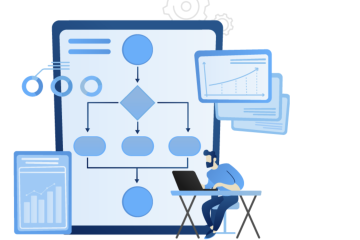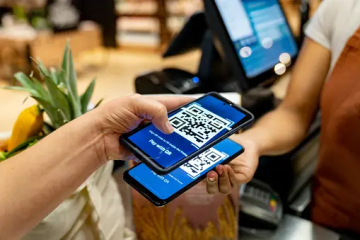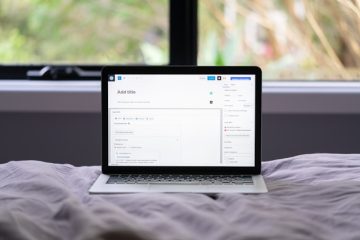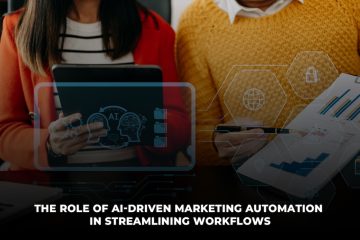
December 26, 2023
In today’s highly competitive market, businesses are constantly seeking effective growth strategies to stand out from the competition. One approach that has gained significant traction in recent years is product-led growth.
But what exactly is product-led growth and how does it work? In this article, we will delve into the concept of product-led growth, explore its benefits, discuss its framework, and provide real-world examples of successful implementation.
Whether you’re a startup founder or a seasoned business owner, understanding and leveraging product-led growth could be the key to unlocking your company’s growth potential. Especially since startups only have a reported 10% success rate globally in 2023
Definition and Key Characteristics
Product-led growth is a growth strategy where a company emphasizes the product itself as the primary driver of customer acquisition, retention, and expansion.
In this approach, the product serves as the main marketing and sales tool, allowing users to experience its value upfront before making a purchasing decision.
Key characteristics of product-led growth include:
1. Self-Service Onboarding: The product is designed to be intuitive and easy to adopt, allowing users to quickly understand its features and benefits without assistance from sales teams.
2. Viral and Word-of-Mouth Expansion: By providing an exceptional user experience, the product encourages users to share their positive experiences with others, leading to organic growth through referrals. This organic growth is powered by the product’s inherent value and the delight it brings to its users.
3. Continuous Product Improvement: User feedback and data, transmitted securely through an affordable VPN,are leveraged to inform ongoing product enhancements and updates, ensuring that the product evolves and meets the changing needs of its users.
4. Customer-Centric Approach: The focus is on understanding and addressing the pain points and desires of the target audience, with the goal of creating customer-centric solutions that drive adoption and loyalty.
By prioritizing the product and aligning all aspects of the business around delivering value, product-led growth can lead to faster customer acquisition, higher customer retention, and improved overall user experience.
How it differs from other growth strategies
Unlike traditional growth strategies that heavily rely on sales teams and marketing efforts, product-led growth (PLG) takes a different approach.
Instead of pushing products through conventional marketing channels or relying on sales tactics, PLG puts the product itself at the forefront of the growth strategy.
With PLG, the product becomes the main driver of customer acquisition, retention, and expansion.
This means that the product is designed to be self-service and easy to adopt, allowing users to experience its value upfront without the need for extensive sales interactions.
In contrast to other growth strategies, PLG emphasizes the viral and word-of-mouth effects.
By providing an exceptional user experience, the product encourages users to share their positive experiences with others, leading to organic growth through referrals. This organic growth is powered by the product’s inherent value and the delight it brings to its users.
Additionally, PLG focuses on continuous product improvement based on user feedback and data.
This iterative approach ensures that the product evolves and meets the changing needs of its users, creating a customer-centric experience that fosters long-term loyalty and adoption.
Overall, PLG stands out from other growth strategies by prioritizing the product’s value, user experience, and organic growth potential rather than relying solely on traditional sales and marketing techniques.
Examples of successful product-led companies
Several companies have successfully implemented product-led growth (PLG) strategies, leveraging their products to drive customer acquisition, retention, and expansion.
Here are a few notable examples:
1. Slack: Slack revolutionized team communication by offering a highly intuitive and user-friendly messaging platform. Their product-driven approach allowed users to easily adopt and experience the value of their platform, leading to widespread adoption within organizations. Slack’s viral growth was fueled by word-of-mouth referrals from satisfied users, making it a prime example of successful PLG.
2. Zoom: Zoom transformed the landscape of video conferencing by providing a seamless and reliable platform for virtual meetings. With a focus on user experience and simplicity, Zoom made it effortless for users to host and join video conferences. As a result, Zoom experienced exponential growth, especially during the Covid-19 pandemic, where the need for remote collaboration skyrocketed.
3. Dropbox: Dropbox disrupted the traditional file storage and sharing industry by offering a user-friendly and accessible cloud storage platform. By providing an intuitive interface and seamless file syncing across devices, Dropbox became the go-to solution for individuals and businesses alike. Their product-centric approach, coupled with easy collaboration features, drove widespread adoption and loyalty.
These examples demonstrate how product-led companies prioritize the value and usability of their offerings, leading to organic growth and loyal customer bases. By providing exceptional user experiences and focusing on product-driven growth, these companies have successfully utilized PLG strategies to carve out their positions in the market and achieve remarkable success.
The Framework of Product-Led Growth
Now, let’s take a look at what makes PLG “tick”.
Building a great product
Building a great product for Product-Led Growth (PLG) involves several key considerations. Here are a few important aspects to focus on:
1. User-Centric Design: Prioritize user experience by designing a product that is intuitive, user-friendly, and solves a specific pain point or provides a unique value proposition. Conduct user research to understand your target audience’s needs and preferences, and incorporate their feedback into the design process.
2. Core Features and Value: Identify the core features that provide the most value to your users and ensure they are well-developed and robust. Focus on delivering a solution that addresses users’ key pain points effectively, making it clear to users why your product is superior to alternatives.
3. Scalability and Performance: Build a product that can scale with the growing number of users and handle increased demand without sacrificing performance. Implement robust infrastructure and architecture to ensure stability, speed, and reliability.
4. Seamless Integration and Compatibility: Make sure your product seamlessly integrates with the existing technology stack or tools that your target audience commonly uses. Compatibility with other popular platforms can streamline adoption and increase user satisfaction.
5. Ongoing Iteration and Improvement: Embrace an iterative approach to product development, continuously enhancing and refining your product based on user feedback and data analytics. Regularly release updates and new features to address user needs and stay ahead of the competition.
By focusing on these aspects, you can build a great product that forms the foundation for your PLG strategy. Remember, a high-quality, user-centric product is crucial for driving adoption, user satisfaction, and ultimately, the success of your PLG efforts.
Facilitating self-service onboarding
Apologies for the abrupt response. Here’s a more conversational explanation:
To ensure a self-service onboarding flow for Product-Led Growth (PLG), the main goal is to make it as easy as possible for users to get started with your product without the need for extensive hand-holding or human intervention.
The key is to design an intuitive user interface that guides users through the onboarding process and helps them discover the value of your product on their own. This means creating an interface that is visually appealing, easy to navigate, and requires minimal explanation. This also means ensuring that your website has landing pages that convert visitors to users.
You can incorporate interactive product tours or walkthroughs within your app to highlight key features and functionalities. These tours can help users understand how to use your product effectively and get up to speed quickly. Additionally, providing in-app help resources such as tooltips, FAQs, online courses, and knowledge bases can empower users to find answers to their questions without needing to reach out for support.
A progressive onboarding approach is also effective. By gradually introducing users to more advanced features and functionalities over time, you prevent overwhelming them from the start. Start with simple tasks or actions that allow users to get started easily, and then gradually introduce them to more advanced features as they become more comfortable with the product.
Another important aspect is error prevention and handling. Implement real -time validation and provide clear error messages to guide users in resolving any issues they encounter. Additionally, offering responsive customer support channels like chat support or community forums can help address any challenges users face during onboarding.
By designing an intuitive user interface, incorporating interactive product tours, providing in-app help resources, following a progressive onboarding approach, and implementing error prevention techniques, you can create a self-service onboarding flow that enables users to navigate and adopt your product independently.
The goal is to empower users to quickly understand and experience the value of your product, leading to higher user satisfaction and increased retention and expansion as well as maximizing your ROI.
Leveraging feedback loops
To leverage feedback loops for Product-Led Growth (PLG), it’s important to prioritize a continuous feedback mechanism that allows you to gather insights from your users and iterate on your product based on their needs. Here’s how you can do it:
1. Feedback Channels: Provide multiple channels for users to share their feedback, such as in-app feedback forms, surveys, or dedicated feedback email addresses. Consider incorporating virtual business cards to make it easy for users to provide feedback at any stage of their journey with your product.
2. User Analytics: Implement user analytics tools to gather data on user behavior, engagement, and usage patterns. This data can provide valuable insights into how users are interacting with your product and identify areas for improvement.
3. User Research: Conduct user research activities, such as user interviews or usability testing, to gather qualitative feedback and understand user perceptions, pain points, and desires. This direct interaction with users can offer valuable insights for enhancing your product.
4. Feedback Analysis: Regularly analyze and categorize user feedback to uncover recurring themes, identify common pain points, and prioritize areas for improvement. Look for patterns and trends to guide your business development efforts.
5. Iterative Product Updates: Based on the feedback received, iterate on your product by addressing user suggestions, fixing issues, and introducing new features or enhancements that align with user needs. Communicate these updates to your users to demonstrate that their feedback is being taken into account.
6. Closed-Loop Communication: Whenever possible, follow up with users who have provided feedback to acknowledge their input and keep them informed about how their feedback is being used to improve the product. This helps foster a sense of partnership and shows that you value their input.
7. Continuous Improvement: Embrace a culture of continuous improvement by making feedback loops an integral part of your product development process. Regularly review and analyze user feedback, identify areas for enhancement, and iterate on your product accordingly.
By leveraging feedback loops, you can gain valuable insights from your users, refine your product based on their needs, and demonstrate to your users that their feedback is valued. This iterative approach ensures that your product evolves in alignment with user expectations and ultimately drives user satisfaction and adoption.
Encouraging referrals
To encourage referrals for Product-Led Growth (PLG), focus on creating a remarkable product and providing incentives for users to share it. Taking these steps will naturally improve brand awareness and encourage users to spread the word and drive organic growth.
Start with building a product that delivers exceptional value and exceeds user expectations. When users have a positive experience with your product, they are more likely to recommend it to others.
Implement viral features that make sharing effortless. This could include referral programs, integrations with popular social platforms, or the ability to invite others to use the product directly from within the app.
Incentivize referrals by offering rewards or benefits to users who refer others to your product. This could be in the form of discounts, exclusive access to features, or other enticing rewards.
Highlight social proof through testimonials, case studies, or success stories. When potential users see others benefiting from your product, they are more likely to trust and consider using it themselves.
Foster a sense of community by providing a platform for users to connect, share their experiences, and engage with each other. Encourage user-generated content, such as reviews or user stories, that can be easily shared and amplified through social channels.
Express gratitude and appreciation to users who refer others to your product. Showcasing your appreciation through personalized messages, thank-you notes, or special rewards can reinforce positive behaviors and encourage further advocacy.
By focusing on creating a remarkable product, removing barriers to sharing, incentivizing referrals, showcasing social proof, fostering a sense of community, and expressing gratitude, you can effectively encourage users to spread the word about your product and drive organic growth through referrals.
Wrapping Up
In conclusion, Product-Led Growth (PLG) is a powerful growth strategy that prioritizes the product itself as the main driver of customer acquisition, retention, and expansion. By focusing on creating a great product, implementing self-service onboarding, leveraging feedback loops, and encouraging referrals, companies can unlock the full potential of PLG.
Through PLG, businesses can accelerate customer acquisition, increase customer retention, and provide an exceptional user experience. By prioritizing the product and continuously iterating based on user feedback, companies can create a customer-centric approach that drives organic growth and customer loyalty.





